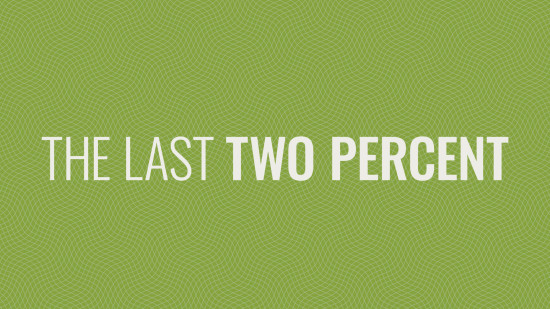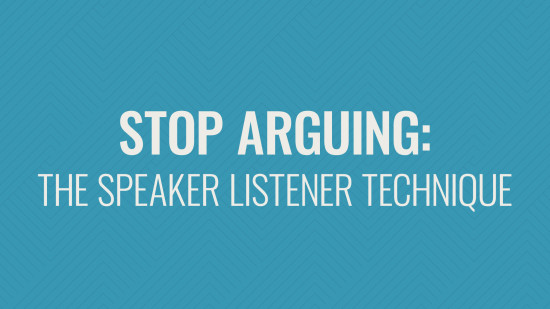When conflict arises, is it ever your fault?
It’s easy to see the mistakes of others or recognize their flaws. After all, the problem is literally staring you in the face. Your spouse is the reason your marriage is in shambles. Your friend is the one who started the argument. Your child is rebelling against your authority. Your boss is unreasonable. And so on. It’s always somebody else’s fault; someone else is always the source of the problem.
Of course, that’s not true; you’re not the only perfect person to live since Jesus. It’s just that you don’t automatically see your own role in the problem. Partly, that’s because you can’t see yourself, but it’s also because you don’t want to accept responsibility. It’s so much easier to blame others. It’s easier to ask them to change instead of doing the work to change yourself.
However, that is the only person that you can change. You can only change yourself. You can’t force anyone else to change. And you can’t expect them to change if you’re not willing to do your part.
The Circle Principle
That’s what we mean when we talk about “drawing a circle.” The full quote is to “Draw a circle around yourself and fix everyone within the circle.” In other words, you should focus on correcting yourself first and foremost.
“Drawing a circle” is how you put into practice Matthew 7:3-5, where Jesus instructs us to “take the log out of your own eye” before trying to “take the speck out of your brother’s eye.” He uses comically exaggerated imagery (how could you have a log—the literal trunk of a tree—in your eye?) to make a point about how blind we often are to our own failings and our own role in the problem.
The log metaphor doesn’t mean that you are always the one with the bigger problem. If your own part is closer to a “speck” than a “log,” then great! You don’t have as much work to do. But you should still do your part, no matter how small or large it might be.
Why You Should Draw a Circle Around Yourself
Obeying Matthew 7 and “drawing a circle around yourself” provides several benefits:
- It controls the only thing that you can control, which is yourself. It is therefore a far more productive use of your time and energy than focusing on what the other person is doing wrong.
- It takes yourself out of the equation by making sure that you are no longer contributing to the problem. The problem will automatically get at least a little bit better, because you aren’t doing anything to make it worse.
- It displays humility by admitting your own faults. Besides being something we are called to (Philippians 2:3-4), humility has the benefit of tearing down defenses. It’s disarming and immediately de-escalates the situation. The other person is far more likely to draw their own circle and be willing to make changes themselves if they see you owning your part. Just like “God opposes the proud but gives grace to the humble” (James 4:6), the people around you will typically resist your demands for change but respond graciously to your humility.
- It allows for confession and forgiveness when needed (Proverbs 28:13).
What Drawing the Circle Is Not
It’s also helpful to define what “drawing the circle” does not mean:
- It doesn’t mean that everything is your fault. There will be times when the majority of the responsibility lies with the other person. But, let’s say the other person is 99 percent to blame, while only 1 percent of the problem is your fault. Your role is to own 100 percent of your 1 percent. Do your part, however small it might be. Don’t use the other person’s bad behavior as an excuse to behave poorly in return. Speaking of excuses…
- It doesn’t mean that you are making excuses for the other person or absolving them of responsibility. They still need to own their part. However, you can’t force them to do that; all you can do is provide an example and encourage them to follow your lead.
- It doesn’t mean that you should avoid trying to reconcile with others or ignore their sin. Jesus’s words in Matthew 18:15-17 and Luke 17:3 still apply. Even in Matthew 7:3-5, we are still instructed to “take the speck out of your brother’s eye”; it’s just that you are to “first take the log out of your own eye.” Draw the circle around yourself first, and then widen the circle to include others.
- It doesn’t mean that you should isolate yourself. Drawing a circle means focusing on yourself, but not by yourself. You should ask God to give you wisdom (James 1:5) and help you understand your thoughts and actions (Psalm 139:23-24). You can also ask your community or others who are close to the situation to help you see your own role more clearly (Proverbs 12:15).
Drawing a circle around yourself is not easy. Humbly taking responsibility and working to change yourself goes against the natural human tendency to be proud, selfish, or lazy. But with God’s help (Philippians 2:13) you can do your part to, “so far as it depends on you, live peaceably with all” (Romans 12:18).





